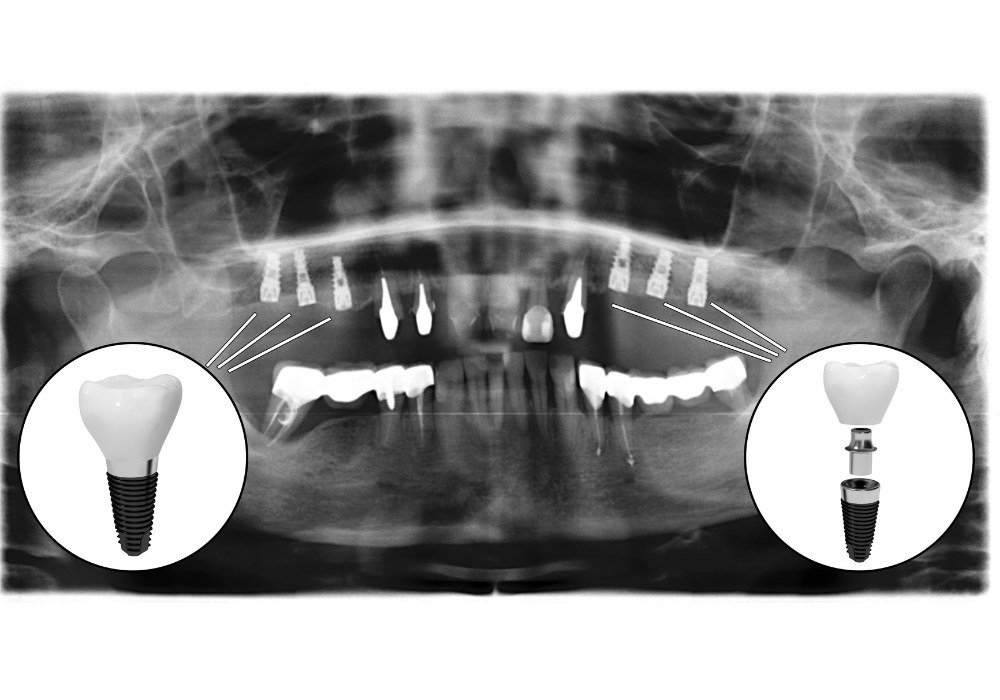Dental Implants vs. Bridges: Which One to Choose?

Losing a tooth is not just an aesthetic concern — it affects your entire oral health. Neighboring teeth can shift, chewing load becomes uneven, and problems with bite and digestion may arise. Thankfully, dental bridges and implants are the two primary solutions available in contemporary dentistry for replacing a lost tooth.
In this article we analyse the advantages, disadvantages and salient features of this two types in more detail.
What is a Dental Implant?
An artificial tooth root, typically composed of titanium, is surgically inserted into the mandible as a dental implant. A crown that closely resembles a natural tooth in both appearance and function is placed on top of the implant once it has fused with the bone.
Benefits of Implants:
- No need to grind down healthy adjacent teeth, unlike bridges.
- Highly durable — lasts 15+ years, often for life
- stimulates the jawbone to stop bone loss.
- feels and looks just like a real tooth.
- may be used to replace an entire arch, a few teeth, or even a single tooth.
Downsides:
- Necessitates surgical intervention.
- It takes many months for the implant implantation and integration that can be a long recovery time.
- More expensive than bridges.
- There must be enough bone volume (or bone grafting may be necessary).
What is a Dental Bridge?
A bridge is a fixed dental prosthesis made of multiple crowns joined together. It “bridges” the space left by the lost tooth, with support from the neighboring teeth on each side.
Benefits of Bridges:
- Fast resolution (treatment often takes 1-2 weeks).
- No surgery is required.
- Less expensive than implants.
- Ideal for clients with inadequate bone or those unable to have surgery.
Downsides:
- Requires grinding down neighboring healthy teeth.
- May cause overloading of supporting teeth over time.
- Does not prevent jawbone shrinkage.
- Average lifespan is 8–12 years, after which replacement is often needed.
Lifesplan | Dental Implant | Dental Bridge |
Lifesplan | 15+ years, often lifelong | 8-12 years |
Surgical Involvement | Required | Not required |
Impact on Adjacent Teeth | None | Requires grinding |
Bone Preservation | Prevents bone loss | Does not preserve bone |
Cost | Higher | Lower |
Aesthetics & Comfort | Feels and looks like a real tooth | Aesthetic, but less natural |
Treatment Duration | 3-6 months | 1-2 weeks |
When to Choose an Implant?
- You desire a long-lasting, natural-looking outcome after losing one or more teeth.
- You want to protect the teeth that are next to you.
- You have enough bone mass or are open to having bone graft surgery.
- You want to make a sustained investment in your dental health.
- You wish to preserve your face structure and healthy chewing ability.
When to Choose a Bridge?
- Large crowns or fillings are already present in the neighboring teeth.
- You don’t want treatment since you don’t have enough bone.
- You require a fast and economical answer.
- You have medical contraindications to surgery.
- You’re looking for a non-invasive option.
Other Factors to Consider
- Oral hygiene: Implants are easier to clean; bridges can trap food under the pontic.
- Bone and gum health: A sound base is necessary for both choices.
- Age: Not advised to get implants for patients under the ages of 18 to 20.
- Time: Long healing and therapy periods for implants.
Conclusion: Better choice for you — Implant or Bridge?
The most advanced, long-lasting and practical solution is dental implants. They maintain the integrity of the jawbone, have no effect on nearby teeth and produce a long-lasting, natural-looking outcome.
Dental bridges are a suitable option for short-term repair since they are quicker and less expensive, especially when neighboring teeth already require crowns.
The best option is always personalised. So make an appointment for a consultation with our dental professional, who will analyse your situation, take x-rays, and suggest the best course of action.



